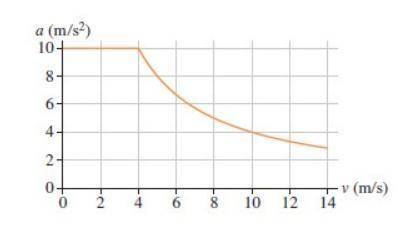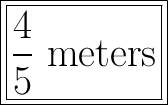
Physics, 11.10.2020 18:01 magicgeek4980
Researchers have measured the acceleration of racing greyhounds as a function of their speed; a simplified version of their results is shown in (Figure 1). The acceleration at low speeds is constant and is limited by the fact that any greater acceleration would result in the dog pitching forward because of the force acting on its hind legs during its power stroke. At higher speeds, the dog's acceleration is limited by the maximum power its muscles can provide. How far does the dog run until its speed reaches 4.0 m/s?


Answers: 1
Another question on Physics

Physics, 22.06.2019 03:30
As part of an industrial process, air as an ideal gas at 10 bar, 400k expands at steady state through a valve to a pressure of 4 bar. the mass flow rate of air is 0.5 kg/s. the air then passes through a heat exchanger where it is cooled to a temperature of 295k with negligible change in pressure. the valve can be modeled as a throttling process, and kinetic and potential energy effects can be neglected. (a) for a control volume enclosing the valve and heat exchanger and enough of the local surroundings that the heat transfer occurs at the ambient temperature of 295 k, determine the rate of entropy production, in kw/k. (b) if the expansion valve were replaced by an adiabatic turbine operating isentropically, what would be the entropy production? compare the results of parts (a) and (b) and discuss.
Answers: 3

Physics, 22.06.2019 05:30
Suppose you have three polarizing filters, with the second at an angle of 42∘ to the first and the third at an angle of 90∘ to the first. by what perfect will the original intensity of unpolarized light be reduced to after passing through all three filters?
Answers: 2

Physics, 22.06.2019 19:00
The particle p starts from rest at point a at time t = 0 and changes its speed thereafter at a constant rate of 2.8g as it follows the horizontal path shown. determine the magnitude and direction of its total acceleration (a) just before point b, (b) just after point b, and (c) as it passes point c. state your directions relative to the x-axis shown (ccw positive) and choose the angle with the smallest magnitude.
Answers: 1

Physics, 22.06.2019 19:00
The built in flash in a compact camera is usally capable of giving correct exsposure for distance up to how many meters?
Answers: 1
You know the right answer?
Researchers have measured the acceleration of racing greyhounds as a function of their speed; a simp...
Questions





















 m/s.
m/s. is initial velocity,
is initial velocity,  is final velocity,
is final velocity,  is time, and
is time, and  is acceleration.
is acceleration.






 is
is 






